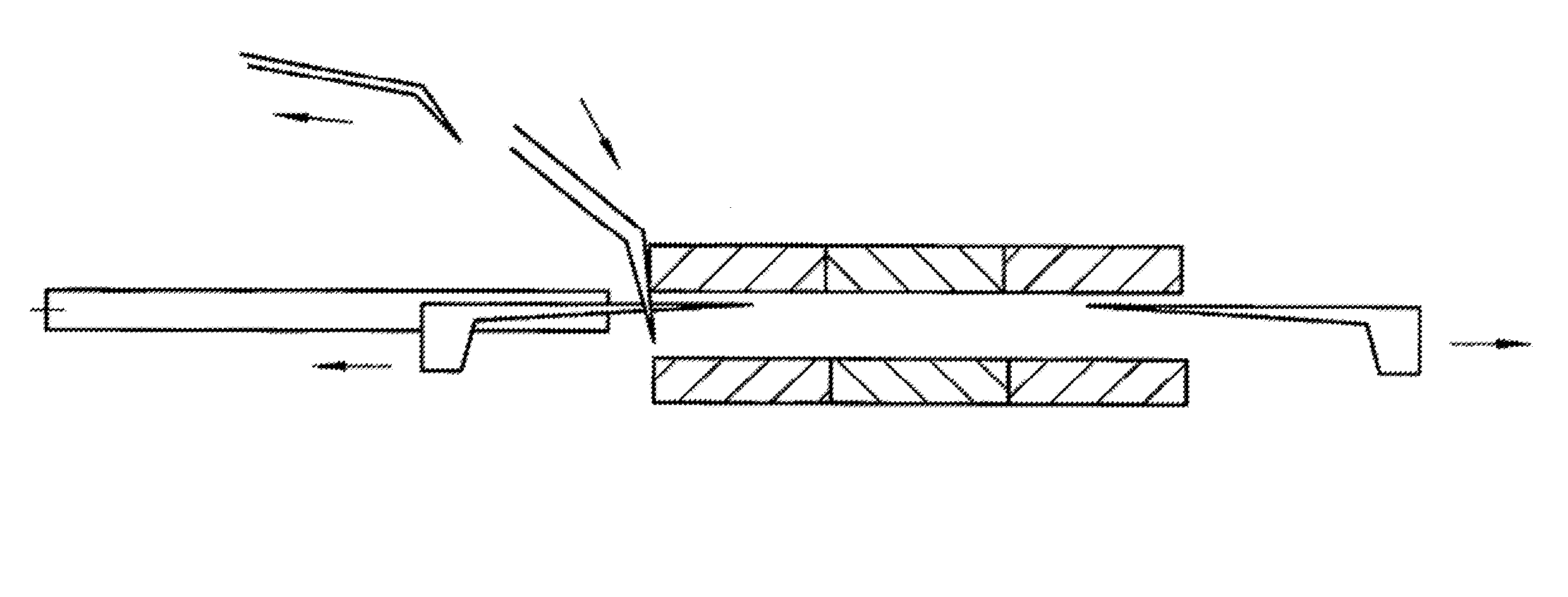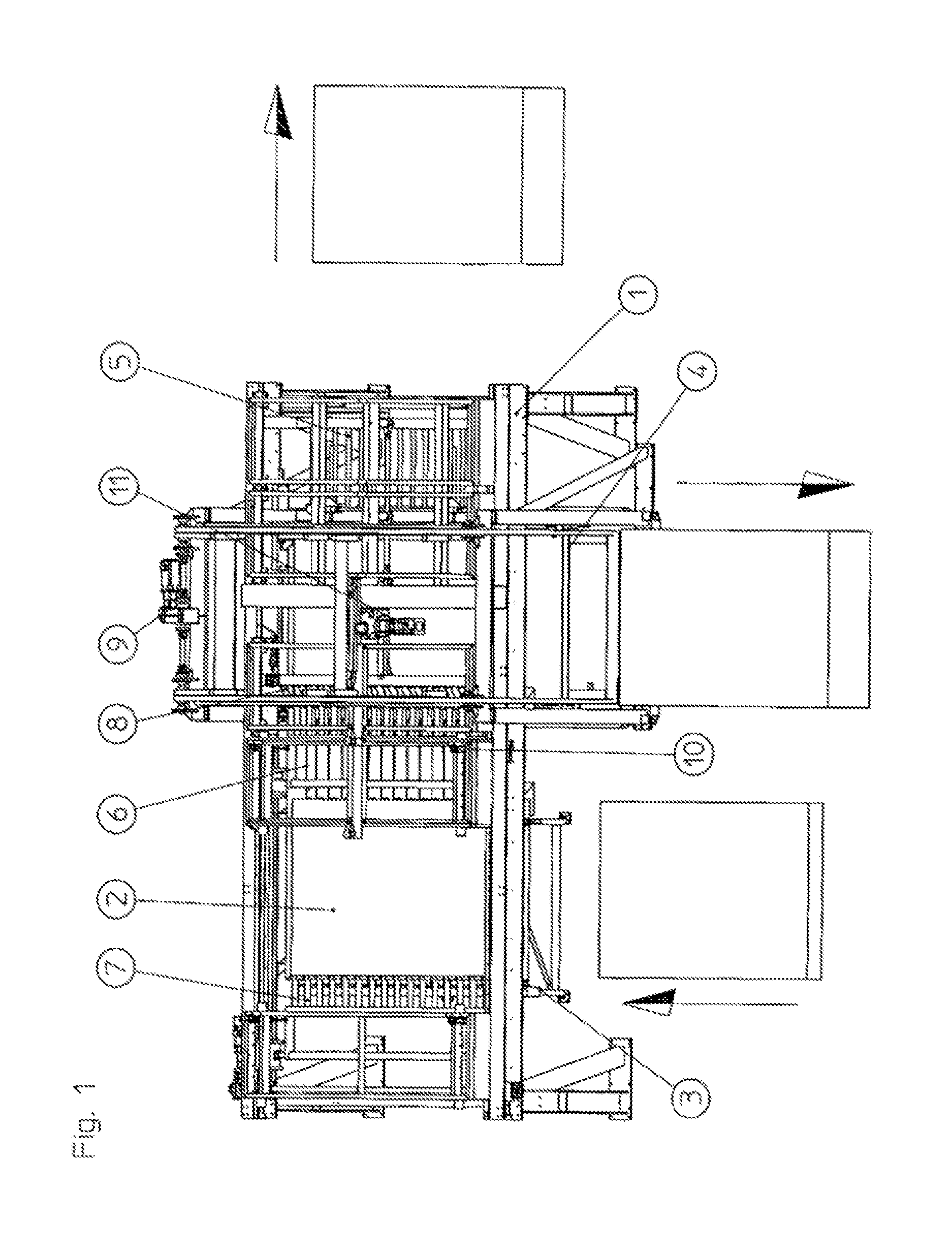Method and device for stacking plate-shaped bodies
a technology of insulating materials and plates, applied in the field of methods and devices for stacking insulating materials, can solve the problems of less readily compressible in particular sheets of insulating materials comprising rock fibers
- Summary
- Abstract
- Description
- Claims
- Application Information
AI Technical Summary
Benefits of technology
Problems solved by technology
Method used
Image
Examples
Embodiment Construction
[0031]In FIG. 1, the basic frame (1) with its stand structure can be seen from the perspective of a viewer at eye level. Shown on the left side of this basic frame is a mineral wool sheet (2), which has been conveyed to the point shown by a feeding means, for example a conveyor belt or the roller conveyor (3). In the foreground, a mineral wool sheet (2) is sketched in the direction indicated by the associated arrow. At this point it is monitored by a camera system that is not shown to ascertain whether the sheet concerned is damaged or can be fed to the following stacking process. This is possible, for example, by means of automatically monitoring the clear profile, within certain tolerances, in the case of a satisfactory sheet. The concept of a “clear profile” is one that is presented to any car driver driving down a tree-lined street. Since the device according to the invention is not only suitable for mineral wool sheets (2), other criteria for the material to be stacked may also...
PUM
 Login to View More
Login to View More Abstract
Description
Claims
Application Information
 Login to View More
Login to View More - R&D
- Intellectual Property
- Life Sciences
- Materials
- Tech Scout
- Unparalleled Data Quality
- Higher Quality Content
- 60% Fewer Hallucinations
Browse by: Latest US Patents, China's latest patents, Technical Efficacy Thesaurus, Application Domain, Technology Topic, Popular Technical Reports.
© 2025 PatSnap. All rights reserved.Legal|Privacy policy|Modern Slavery Act Transparency Statement|Sitemap|About US| Contact US: help@patsnap.com



